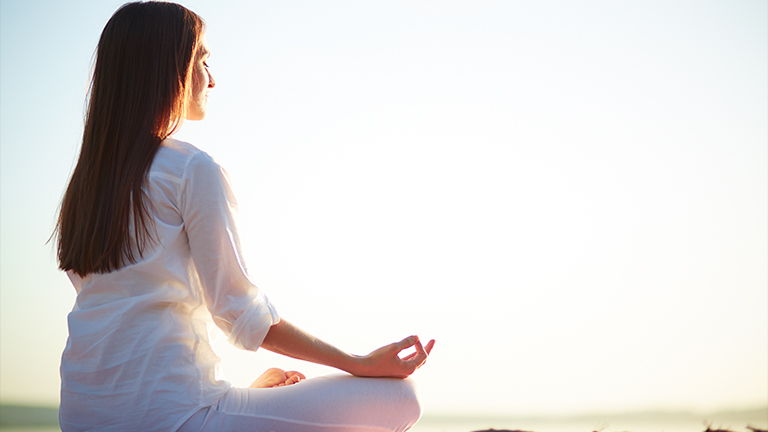In today’s fast-paced world, where stress, anxiety, and constant distractions are the norm, mindfulness meditation has emerged as a powerful tool to improve mental clarity, reduce stress, and promote emotional well-being. This ancient practice, rooted in Buddhist traditions, has gained immense popularity in the USA, UK, and Canada—not just among spiritual seekers but also among mental health professionals and everyday individuals looking for balance in their lives.
What is Mindfulness Meditation?
Mindfulness meditation is the practice of intentionally focusing your attention on the present moment without judgment. Instead of dwelling on the past or worrying about the future, mindfulness encourages you to experience life as it unfolds—breath by breath, thought by thought.
It can be as simple as paying attention to your breathing, noticing bodily sensations, or observing your thoughts as they come and go. Whether practiced for five minutes or an hour, mindfulness meditation helps you train your mind to be calm, clear, and focused.
The Core Principles of Mindfulness
Understanding the core principles can help you build a stronger meditation practice:
- Present-Moment Awareness – Focus on what is happening right now.
- Non-Judgment – Observe your experiences without labeling them as “good” or “bad.”
- Acceptance – Allow thoughts and feelings to come and go naturally.
- Patience – Recognize that mindfulness is a skill developed over time.
- Beginner’s Mind – Approach each practice session with curiosity, as if it’s your first time.
Benefits of Practicing Mindfulness Meditation
Research-backed benefits include:
- Reduced Stress and Anxiety – Mindfulness calms the body’s stress response.
- Better Emotional Regulation – You respond to challenges with clarity instead of impulsivity.
- Improved Focus and Concentration – Helps in work, studies, and daily decision-making.
- Enhanced Sleep Quality – Encourages relaxation before bedtime.
- Greater Self-Awareness – Leads to better understanding of your own thoughts and behaviors.
- Support for Chronic Pain – Studies show mindfulness can reduce pain perception.
Step-by-Step Guide to Mindfulness Meditation
Here’s a simple mindfulness meditation technique for beginners:
- Find a Quiet Space – Sit comfortably in a chair or on the floor.
- Close Your Eyes – Or keep them slightly open with a soft gaze.
- Focus on Your Breathing – Notice each inhale and exhale.
- Observe Without Judgment – If your mind wanders, gently bring it back to your breath.
- Start Small – Begin with 5–10 minutes daily and gradually increase.
Mindfulness Breathing Exercises
Breathing is at the heart of mindfulness. Try these techniques:
- 4-7-8 Breathing – Inhale for 4 seconds, hold for 7, exhale for 8.
- Box Breathing – Inhale, hold, exhale, and hold again for 4 counts each.
- Natural Breath Observation – Simply notice the natural rhythm of your breath without altering it.
Common Challenges in Mindfulness Practice and How to Overcome Them
- Restlessness – Shorten sessions and gradually extend.
- Overthinking – Focus on sensations like your breath or body posture.
- Impatience – Remember, mindfulness is about the journey, not perfection.
- Inconsistency – Schedule meditation at the same time each day.
Mindfulness Meditation for Stress and Anxiety Relief
Mindfulness helps break the cycle of anxious thoughts by training you to anchor your mind in the present moment. In the USA, UK, and Canada, therapists often integrate mindfulness-based cognitive therapy (MBCT) and mindfulness-based stress reduction (MBSR) into treatment plans for anxiety disorders.
Daily Mindfulness Habits to Improve Mental Wellbeing
- Practice mindful eating by savoring each bite.
- Take mindful walks, focusing on sounds, smells, and sights.
- Pause for a “mindful minute” before starting meetings or work.
- Journal about your daily experiences and feelings without judgment.
The Science Behind Mindfulness Meditation
Scientific studies show mindfulness meditation changes brain structures linked to attention, emotional regulation, and empathy. Functional MRI scans reveal increased gray matter density in the hippocampus (memory) and reduced activity in the amygdala (stress response center).
Best Apps and Resources for Mindfulness Meditation
For beginners and seasoned practitioners, apps can make mindfulness more accessible:
- Headspace – Guided meditations and daily reminders.
- Calm – Sleep stories, breathing exercises, and mindfulness tips.
- Insight Timer – Free meditations and music for relaxation.
- 10% Happier – Science-based mindfulness coaching.
Final Thoughts
Mindfulness meditation is more than just a relaxation technique—it’s a way of living. By practicing regularly, you can transform your mental well-being, strengthen focus, and develop a deeper connection to the present moment. Whether you’re in New York, London, or Toronto, this practice can bring more peace and clarity into your life.


